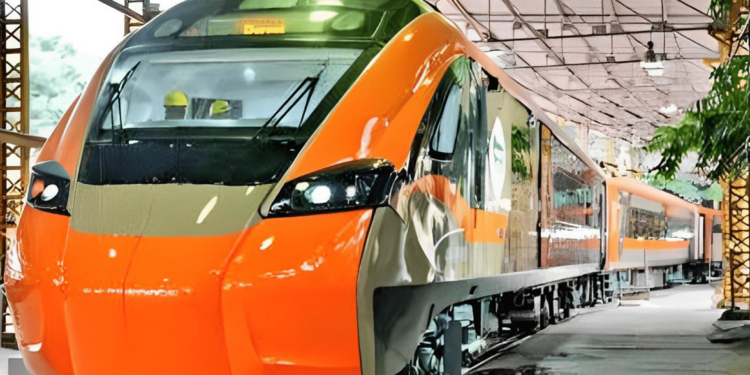New Delhi: It is just as well that Prime Minister Narendra Modi decided to inaugurate three Vande Bharat trains when he did because the number of such trains waiting to be inaugurated is piling up.
Sixteen vande bharat trains, each with eight coaches, are parked in railway yards across the country, waiting to be inaugurated. An additional five rakes are on standby. This is as of August this year. The Integrated Coach Factory at Chennai has been rolling out two Vande Bharat trains every month.
The reason for the inventory pile-up as per railway ministry sources is that there are no routes available to run these trains on.
Typically, Vande Bharat trains are chair cars which means that they can only operate on short routes that can be covered in eight hours, one way. “Vande Bharat trains have a limitation as they can’t run past midnight. The train has to complete the round trip and be back by midnight at the originating station especially since a six hour break is required for maintenance,” said an official. “This is why only short routes are chosen for these chair car trains,” they added.
This was also why when the prime minister inaugurated yet another route on August 31, officials questioned the logic behind it. The Lucknow to Meerut route already has two Vande Bharat trains – the most recent one being to Ayodhya via Lucknow. “Meerut is not a major passenger hub and existing trains coming from Delhi would have sufficed. No consideration is being given to whether these trains are running to capacity or not. Most have a light passenger load on weekdays,” says officials.
As of now, there are 54 Vande Bharat trains in operation, several of which were inaugurated Just the ahead of the lok Sabha elections. What’s more, the capital blocked because of the stationary rakes is over Rs 800 crore. Production cost at the ICF for an eight-car rake is about Rs 52 crore.
Thus, it is not just the Model Code of Conduct and the elections that put a spoke in the wheels of the prime minister’s Vande Bharat inauguration spree. It is the lack of short routes tailor-made for these trains.
Experts are also questioning the speed ascribed to the Vande Bharat trains. These trains are designed to run at 130 kilometres per hour on tracks, a majority of which are designed to withstand only up to 110 kmph of speed. The signalling system for 110 kmph is called a distant signal, and is distinct from a double distant signal that is needed to run a train at 130 kmph. “When the track has only distant signals, how can a train run at 130 kmph?” asks an official.
A double distant signal is located approximately two kilometres from the home signal and gives adequate lead time to a driver travelling at 130 kmph to react and decide as to whether to go ahead or brake. To illustrate, if a train has to pass through a station, the double distant signal will be green. A distant signal turns yellow to caution a train to stop at the home signal which is located just before a station. A single distant signal thus does not give a driver enough reaction time which means a train cannot travel at speeds beyond 110 kmph if it is only receiving the latter kind of signal.
The speed of the initial trains was docked at 160 kmph but reduce subsquently 130 kmph in June this year following the Kanchenjunga Express accident. But even the 130 kmph tag is exaggerated say experts. “Vande Bharat trains have an average speed of 70-80 kmph while other trains that are designed for similar speed limits have an average speed of 60 kmph,” says another official.
In addition, many tracks are in a poor condition and a lot of investment is required to upgrade them, say officials. They point out that rather than investing in railway infrastructure such as tracks, the government is upgrading railway stations, further reducing profits and rate of return. While the tracks of the Chennai-Nagercoil route are in good condition, the Madurai-Bengaluru and Meerut-Lucknow routes will be a challenge, say officials.
The Wire has written to the Railways with these concerns. This report will be updated if there is a response.





















